Up on the waterfront at Hunters Point in the southeast corner of the city lies the 638 acres abandoned United States Navy Shipyard in San Francisco. Established in 1870, San Francisco Naval Shipyard was originally built to serve as a commercial shipyard. It consisted of two graving docks; these are a type of dry dock shaped like a narrow basin, usually made of earthen berms and concrete.
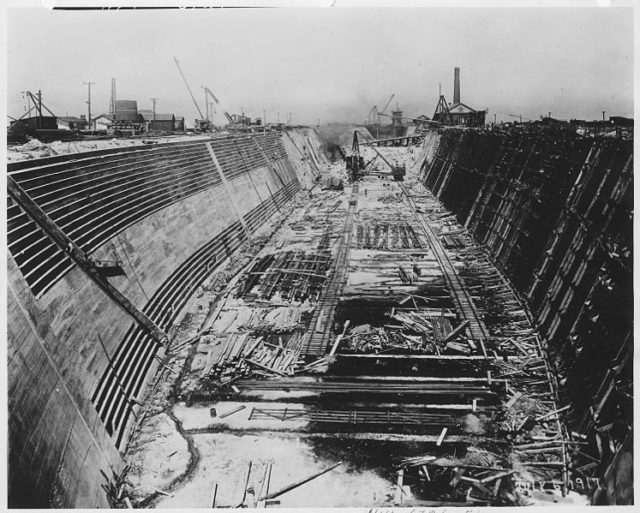
In its beginnings the shipyard was called Hunters Point Drydocks. It was built on solid rock and was so advanced for its time that at one point in history the graving docks here were considered to be the largest in the world.
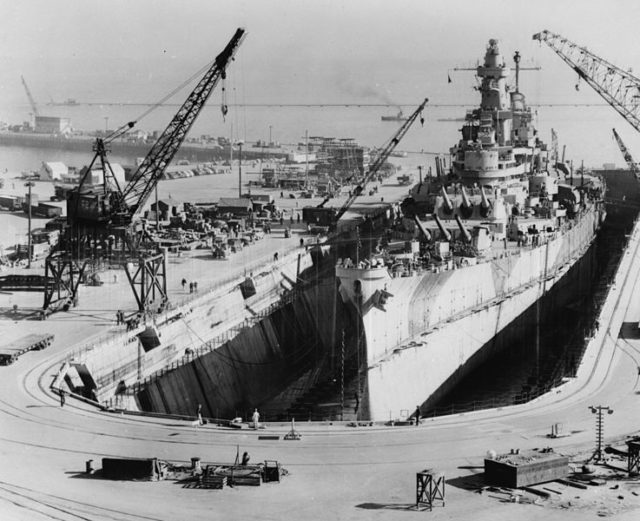
With a length up to 304 meters, people often said they were so big that accommodating the world’s largest warships and passenger steamers was child’s play. During the beginning of the 20th century, this naval shipyard received its first extension by creation of land fill extending into the San Francisco Bay.
In the peaceful period after World War 1 and before World War 2, the Navy contracted the shipyard from the private owners in order to use the docks. The reason behind this is that the docks provided deep-water facilities between San Diego and Bremerton, Washington.
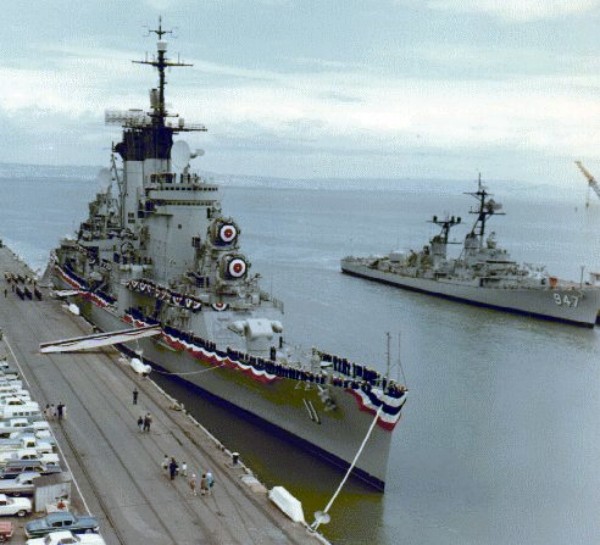
Early on the main naval base in the area was at Mare Island Naval Shipyard. But due to continuous silting the area became only suitable for shallow-draft ships. And so in 1920, a Congressional hearing on Pacific Coast Naval Bases was held in San Francisco, at San Francisco City Hall. Representatives including Mayor Rolph and City Engineer O’Shaughnessy made the case to make a permanent naval base at Hunters Point.
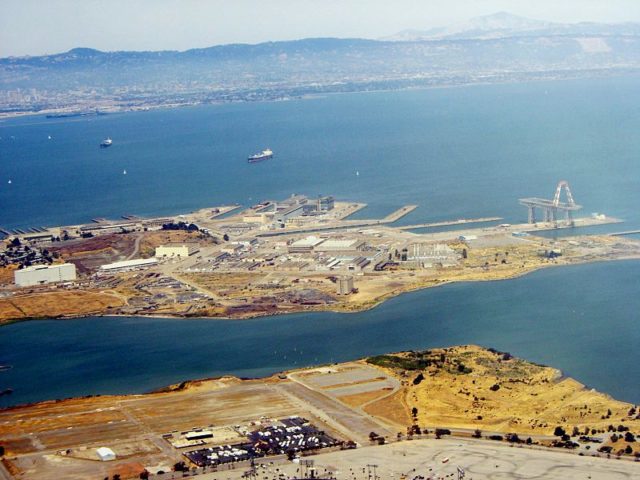
The need to increase naval shipbuilding and repair facilities became even more pressing as the country entered World War 2. The navy bought the property from the private owners in 1940 and named it Hunters Point Naval Shipyard. It quickly became the major shipyard of the west coast, and so many workers moved into the area. Sometime later it was renamed Treasure Island Naval Station Hunters Point Annex.
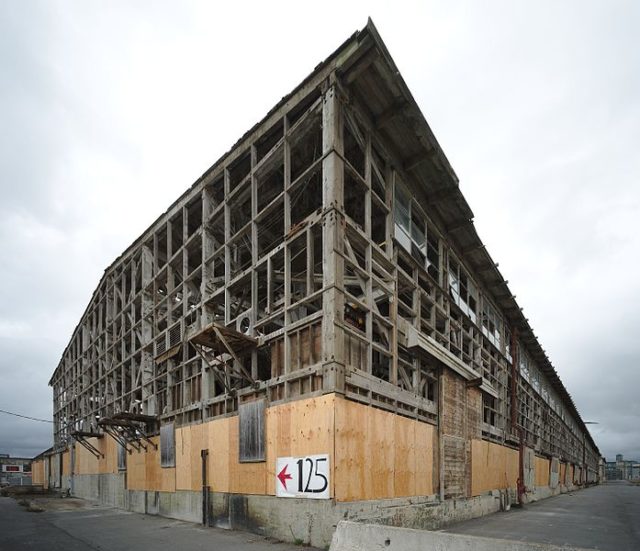
One notable historical fact about this naval shipyard is that in July 1945, the key fissile components of the first atomic bomb were loaded onto USS Indianapolis to be transferred to Tinian. When the Second World War was over and up until 1969, the Hunters Point shipyard was where the Naval Radiological Defense Laboratory was located. In addition, the US military’s largest facility for applied nuclear research was also located here.
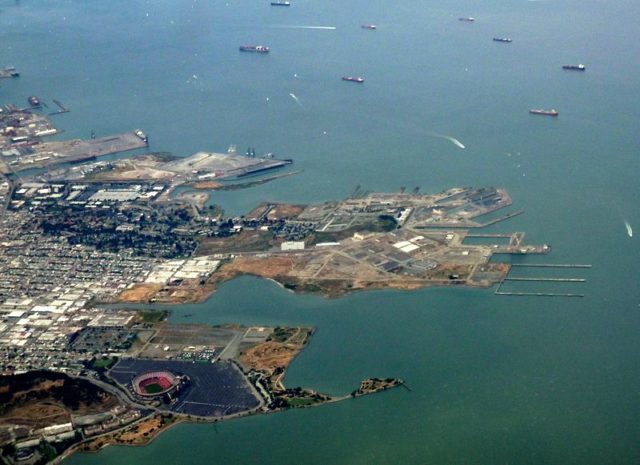
This very shipyard was used decontaminate ships from Operation Crossroads (nuclear weapon tests conducted by the United States at Bikini Atoll in mid-1946). Needless to say, after the war there was an influx of workers and so the shipyard remained to function as a naval base and commercial shipyard.
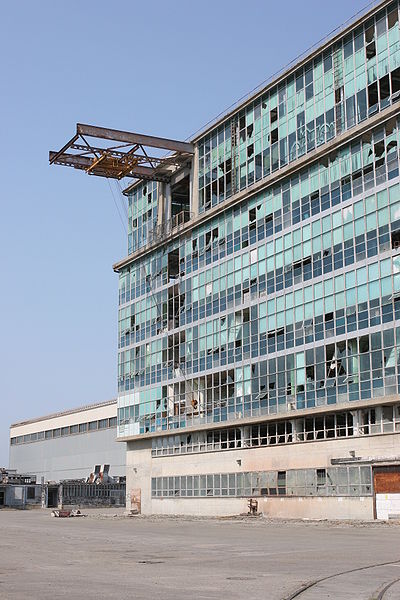
Having the world’s largest docks wasn’t enough, for this naval shipyard wanted another record and so an enormous 630-ton capacity crane was constructed. It was the largest in the world when it was completed in 1947.
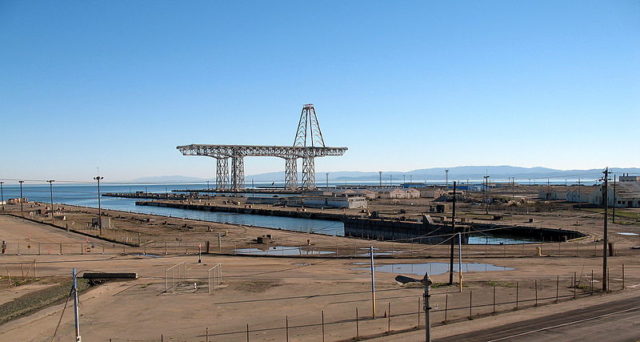
The shipyard was run by the Navy until 1974, then it was leased to a commercial ship repair company.
As part of the Base Realignment and Closure Commission, the Navy closed the shipyard and Naval base in 1994. Given the fact the shipyard once housed atomic bomb elements and oil-fired power generation facilities, a legacy of pollution was left after it’s closure. To this day the site is still being decontaminated. There is even evidence of falsified radiation test and soil tests result done by Tetra Tech proving that the site is safe for redevelopment and habitation.
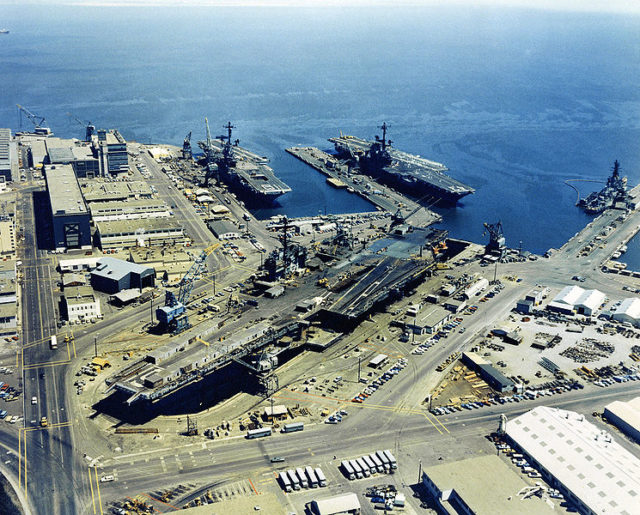
Funny how things turn out to be at the end. After the closure, the site became an artist community in 1983. Today this shipyard is home to more than 250 artists.
